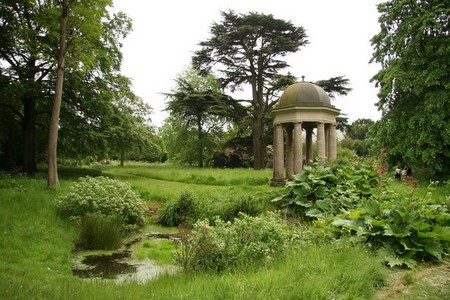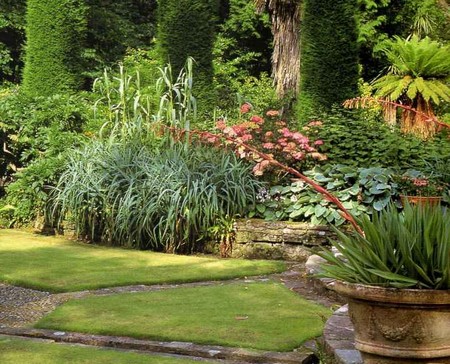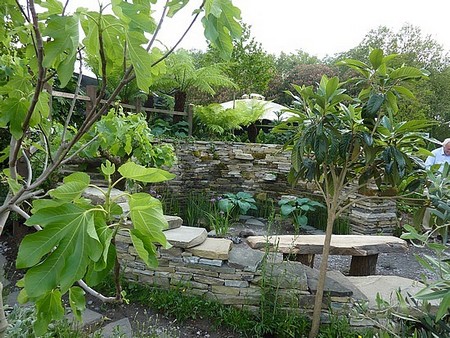Best Way to Survive Buffeting Winds in Your Garden
Many gardens are buffeted by wind, even in the mildest areas. Wind swirls between buildings, while eddies develop close to walls. For large and exposed areas, hedges can help, but for those small and awkward corners found in most gardens, it is the plants themselves that must be resilient.
Coastal areas suffer from the further hazard of sea-salt spray, which can burn, distort and kill plants – but there are widely-available plants that will tolerate even these conditions.
Shrubs for windy, coastal areas
Although ideal for seaside sites, these shrubs also thrive in other windswept areas where it is difficult to establish and cultivate plants.
- Elaeagnuspungens ‘Maculata’: Hardy, slow-growing, evergreen shrub, about 2.4m high and wide, with oval, leathery, glossy-green leaves splashed with gold. It is ideal for creating a color contrast with the purple-leaved Cotinus coggygria ‘Royal Purple’.
- Hippophae rhamnoides (sea buckthorn): Very hardy, deciduous and bushy shrub, 1.8-2.4m high and wide, with narrow, silvery leaves. Bright orange berries appear from autumn to late winter. Birds do not usually eat these berries and therefore it creates an attractive feature in winter.
- Olearia macrodonta (daisy bush): Evergreen and 1.8-2.lm high and wide, it bears holly-like, mid-green leaves and small, daisy-like flowers in tight clusters during mid-summer. It survives wind and salt spray, but is slightly tender in very cold areas.
- Symphoricarposalbus (snowberry): Hardy, deciduous and suckering shrub, 1.5-1.8m high and spreading to 2.1m – it forms a thicket. It is mainly grown for its white berries, which persist from autumn to late winter. It is ideal for a windswept bed between houses or walls.
Other shrubs for coastal areas
- Elaeagnus x ebbingei: Evergreen, with leathery, silvery-grey leaves.
- Euonymus japonicus (spindle tree): Bushy and evergreen, with glossy, green leaves. Several variegated forms.
- Olearia x haastii (daisy bush): Hardy and evergreen, with white, daisy-like flowers during mid-summer.
- Pittosporum tenuifolium: Slightly tender evergreen shrub with wavy-edged leaves.
- Spartium Junceum (Spanish broom): Hardy and deciduous, with rush-like green stems and yellow, pea-like flowers during early and mid-summer. It is very fast growing.
- Tamarix tetrandra (tamarisk): Hardy and deciduous, with wispy foliage and bright pink flowers during late spring. It survives very windy areas wonderfully well.
Border plants for windswept corners
Many herbaceous plants survive strong winds once they are established and growing strongly. Here are a few of them:
- Chelone obliqua (turtlehead): Grows 45-60cm high, with upright stems bearing terminal clusters of deep rose, snapdragon-like flowers during mid- and late summer. Space plants 30-45cm apart. It forms an attractive color-contrasting partnership with Leucanthemum x superbum (the Shasta daisy, and still better known as Chrysanthemum maximum).
- Heuchera sanguinea (coral flower): Grows 30~45cm high, with masses of slender stems that bear bright red, bell-shaped flowers throughout summer. Space plants 38cm (15m) apart.
- Liatrisspicata (blazing star): Grows about 60cm (2ft) high and reveals upright, wandlike spires of pink-purple flowers during late summer. Space plants 38cm (15m) apart. It harmonizes with many plants, including kniphofias (red hot pokers) and Bergenia ‘Silberlicht’.
- Platycodon grandiflorus (balloon flower): Grows 30-60cm high and produces balloon-shaped buds that open throughout summer to reveal light blue, saucer-shaped flowers. Space plants 38cm apart.
Categories
Advertisements
Recent Articles
 How to Understand Bed Sizes – A Small Guide
How to Understand Bed Sizes – A Small Guide How to Select Some Must Have Kitchen Accessories
How to Select Some Must Have Kitchen Accessories Best Way to Change a Car Tire
Best Way to Change a Car Tire Best Way to Write an Affirmation
Best Way to Write an Affirmation Best Way to Take Charge of Your Financial Life
Best Way to Take Charge of Your Financial Life Best Way to Survive a Party When You Don’t Know Anyone
Best Way to Survive a Party When You Don’t Know Anyone Best Way to Stop Self Sabotaging Yourself
Best Way to Stop Self Sabotaging Yourself Best Way to Start Journal Writing
Best Way to Start Journal Writing Best Way to Speak with a Powerful Voice
Best Way to Speak with a Powerful Voice Best Way to Simplify Your Life
Best Way to Simplify Your Life Best Way to Respond to a Put-Down
Best Way to Respond to a Put-Down Best Way to Reduce Acne Breakouts
Best Way to Reduce Acne Breakouts Best Way to Recover from Dining Disasters
Best Way to Recover from Dining Disasters Best Way to Quit Your Job Gracefully
Best Way to Quit Your Job Gracefully Best Way to Make Your Own Website
Best Way to Make Your Own Website




Leave a Reply